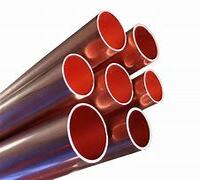1. Introduction
Stripping copper wire might seem straightforward, but doing it right can significantly boost your scrap value. Clean, bare copper fetches a much higher price than insulated or contaminated wire. Whether you’re salvaging from old electronics, HVAC systems (like aircon copper pipe), or electrical panels, knowing the best way to strip copper wire ensures you get the most out of every pound.

In this guide, we’ll cover everything from manual techniques to mechanical tools, safety tips, and what to do with your recovered copper—including copper strip, copper rod, and even copper bus bar remnants.
2. Why Strip Copper Wire?
Recycling centers pay top dollar for clean, bare copper. Insulated wire is often downgraded to a lower category (like ‘copper wire with plastic’), slashing your payout by 30–50%.
Stripped copper can include:
- Rod copper (from grounding or welding rods)
- Flat copper strip (used in earthing or electrical components)
- Copper round bar (machined or extruded stock)
- Thin copper strips from motors or transformers
Even small amounts add up—especially if you’re stripping wire for scrap regularly.
3. Tools You’ll Need
The right tool depends on wire size and volume:
- Wire strippers (for thin gauge wires under 10 AWG)
- Manual cable cutters or utility knives (for medium cables)
- Automatic wire stripping machines (ideal for bulk work)
- Heat guns (optional, for softening tough insulation—never use open flame!)

Avoid burning copper wire for scrap. It releases toxic fumes and oxidizes the copper, lowering its resale value.
4. Step-by-Step: Best Way to Strip Copper Wire
4.1. Sort Your Wire First
Separate types before stripping. High-value categories include:
- Bare bright copper (clean, unoxidized strands)
- Copper strip wire (flat conductors from switchgear)
- Copper earth strip 25x3mm (common in grounding systems)
Discard aluminum or mixed-metal cables—they reduce purity and value.
4.2. Manual Stripping (Small Batches)
For household wiring or short lengths:
- Use precision wire strippers to nick the insulation without cutting the copper.
- Pull the insulation off in one smooth motion.
- For thicker cables (like 15mm copper pipe insulation or AC copper lines), score the jacket with a utility knife, then peel it back.

Tip: Soak stubborn insulation in warm water to loosen adhesives.
4.3. Mechanical Stripping (Large Volumes)
If you’re stripping wire for recycling regularly, invest in a benchtop stripper.
- Feed the cable into the machine; rotating blades cleanly remove insulation.
- Works well on copper strip roll, flexible copper bus bar remnants, and even copper tubing sheathing.
These machines handle everything from 1mm copper strip to thick copper metal strips used in industrial settings.
5. Common Mistakes to Avoid
- Burning copper wire for scrap: Illegal in many areas and damages copper quality.
- Mixing copper types: Keep beryllium copper strip separate—it’s an alloy with higher value.
- Selling dirty or oily copper: Clean with vinegar or mild detergent if needed.
- Ignoring local scrap yard rules: Some require minimum lengths or prohibit certain coatings (e.g., nickel plated copper strip may need special handling).
6. What to Do With Stripped Copper
Once clean, sort your copper into categories:
- Rod copper: Includes copper welding rod, copper brazing rod, and copper earth rod pieces.
- Copper strip: Flat pieces like copper edging strip, copper roof strip, or copper strip for earthing.
- Round bar copper: From machining scraps or leftover copper round bar stock.
Check current copper rod price and copper strip price online before selling. Prices fluctuate daily based on market demand.
7. Where to Sell Your Copper
Look for reputable scrap yards that specialize in non-ferrous metals. Search ‘copper strip near me’ or ‘copper bars for sale near me’ to find local buyers.
Ask about:
- Payment rates for bare bright vs. #1 copper
- Acceptance of copper bonded steel or copper clad ground rod remnants (these are lower value due to steel cores)
- Minimum lot sizes
Pro tip: Some recyclers buy copper ingot or cu bars directly—worth asking if you have large quantities.
8. Bonus: Repurposing Copper Scraps
Not all stripped copper needs to go to the scrap yard. Consider:
- Melting into custom copper ingot for casting (only if you have proper foundry equipment)
- Using thin copper strips for DIY projects like jewelry or garden edging (copper tape for snails deters pests naturally!)
- Salvaging copper pipe fittings or copper tubing for plumbing repairs
Remember: Never melt copper indoors—always use proper ventilation and safety gear.
9. Conclusion
Stripping copper wire for scrap is a simple yet profitable skill when done correctly. By using the right tools, avoiding burning, and sorting your copper properly—whether it’s rod copper, flat copper strip, or remnants from air conditioner copper pipe—you’ll maximize both safety and earnings. Keep an eye on copper rod price trends, stay organized, and always prioritize clean, bare copper to get the best return at the scrap yard.
Our Website founded on October 17, 2012, is a high-tech enterprise committed to the research and development, production, processing, sales and technical services of ceramic relative materials such as How. Our products includes but not limited to Boron Carbide Ceramic Products, Boron Nitride Ceramic Products, Silicon Carbide Ceramic Products, Silicon Nitride Ceramic Products, Zirconium Dioxide Ceramic Products, etc. If you are interested, please feel free to contact us.

